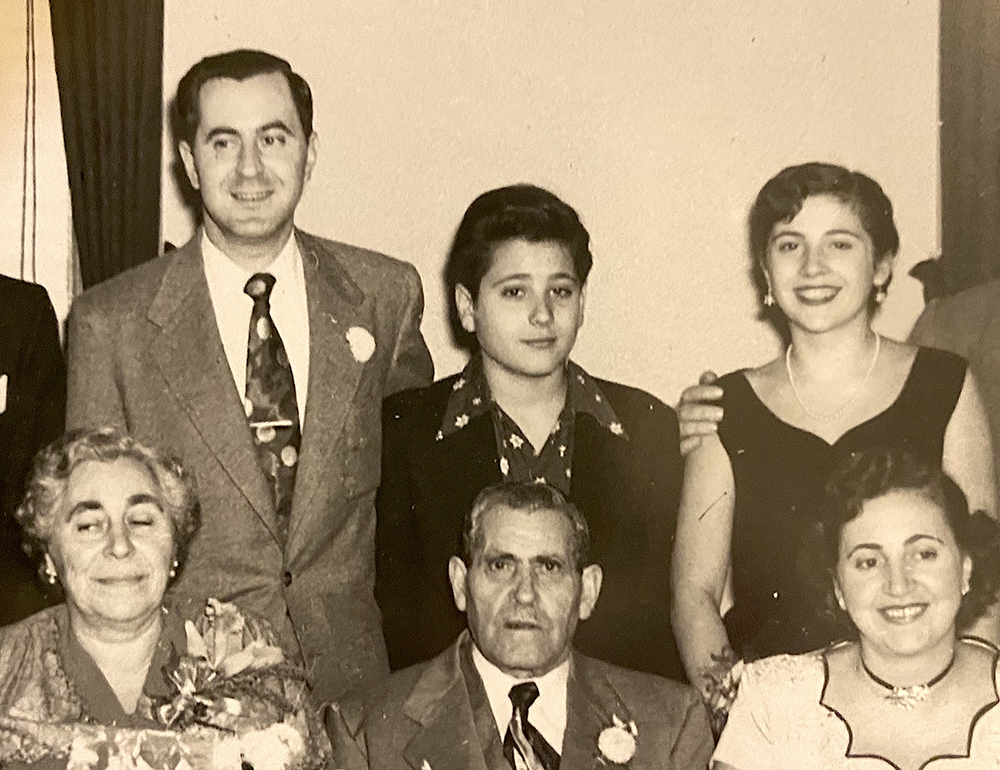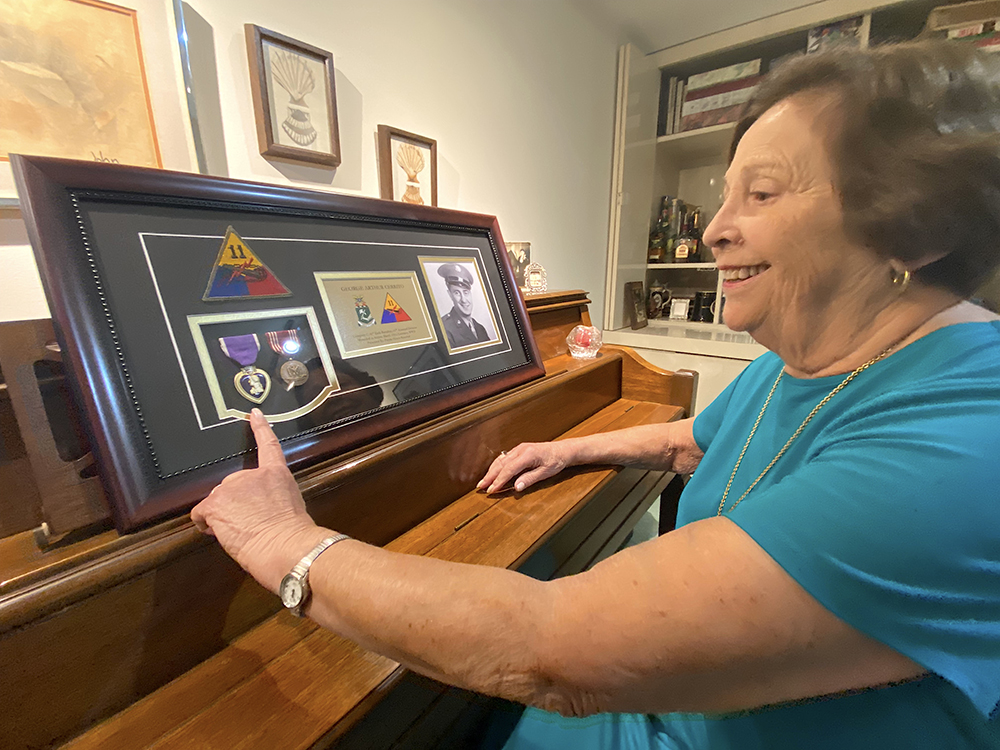
EDISON, N.J. — Margarita Manhardt was a child in September 1944 when her family went to the port of embarkation piers in Hoboken to wish her uncle farewell.
George Cerrito was a 26-year-old tank gunner in the 11th Armored Division during World War II.
“He was very jovial all through his life,” Margarita said, “and he loved children.”
Cerrito survived the war with a brain injury in combat that stole his ability to speak clearly. He received the medal for wounded U.S. servicemembers — the Purple Heart.
But this medal and other keepsakes disappeared after Cerrito died in 1993 — part of a mix-up that displaced all the belongings from the home where Cerrito lived after the war.
Margarita, who lives in Edison, thought her uncle’s medal was permanently gone. But in August, she was amazed to learn it was found in Texas.
The nonprofit group “Purple Hearts Reunited” returned it to her in a special frame with a photo of Cerrito in uniform. The inscription reads: “George Arthur Cerrito, Company C, 41st Tank Battalion, 11th Armored Division, Wounded in Action, Germany, WWII.”
“I almost fell out of the chair,” she said.
The “Bulge”
German tank divisions poured into Belgium’s forested Ardennes region on Dec. 16, 1944. It was a last-ditch attack aimed at forcing the Allies to accept a peace deal favorable to the Axis powers.
That same day, Cerrito and the 11th Armored Division arrived in France. But about 425 miles to the east, the German Ardennes Offensive pressed a “bulge” in the allied defenses, headquartered at Bastogne. Paratroops of the U.S. 101st Airborne Division faced two powerful threats: murderous German artillery and a deadly cold winter.
Gen. George Patton was already racing with the U.S. 3rd Army to rescue Bastogne. The 11th Armored Division, with Cerrito, joined the fight — the so-called “Battle of the Bulge.”

Shrapnel Was Flying
The Ardennes Offensive failed, and the Allies pursued the Germans back to their homeland.
By March 1944, the 11th Armored Division was in Germany battling committed Nazi defenders near the Rhine River.
Cerrito’s tank commander, Sgt. George Newman, recounted the fight in an online history of the division. He described mortar fire hitting their M4 Sherman tank.
“Shrapnel was flying all over,” Newman said. “My gunner, Cpl. George Cerrito, was hit pretty hard in the head and knocked unconscious.”
Newman said three German prisoners were ordered to help lift Cerrito out of the tank and carry him on an improvised stretcher to the medics.
‘He Could Laugh’
Margarita and her family visited Cerrito at a Bayonne, New Jersey military hospital.
“He could do nothing,” she said. “He couldn’t walk, and he couldn’t talk. But he could laugh.”
With rehab, Cerrito regained the partial ability to walk and even drive his cars — Cadillacs. Although he couldn’t work, most days he “dressed to the nines” in a suit and tie, Margarita said.
Still, she emphasized that Cerrito’s faith never wavered, and he became an usher at parishes in Hasbrouck Heights and Point Pleasant Beach, New Jersey.
“He was a good, faithful Catholic,” she said. “He was as involved as he could be, given his condition.”
Margarita had several uncles who served in the military. But Cerrito’s speaking disability kept him from joining in their storytelling banter.
Instead, she said, Cerrito shared his experiences simply by holding up his Purple Heart and Good Conduct medals.
The Beauty of This
Cerrito was 75 when he died of melanoma cancer. His belongings went to a cousin who, before his death, left his home to a fiancé.
 She moved out of state and took everything without leaving a forwarding address.
She moved out of state and took everything without leaving a forwarding address.
“That was a very sad time,” Margarita said.
For the next three decades, Margarita, a widow, focused on three adult children and three grandchildren.
Then came the phone call last August.
A woman who served in the Air Force found the keepsakes at a swap meet near Dallas, and she purchased the lot.
Knowing the Purple Heart’s significance, she contacted Purple Hearts Reunited for help finding the rightful owner or his surviving family members.
One item among the keepsakes pointed to Cerrito — his nametag from a reunion of 11th Armored Division veterans.
Margarita said the returned medals, which were specially framed by the nonprofit, filled an emptiness felt by her family.
It also illuminated Cerrito’s sacrifice, not just for what it meant to him and his family but also for the entire nation.
“What his being wounded did to his life, and what he did for us,” she said, “I could not believe the beauty of this.”
